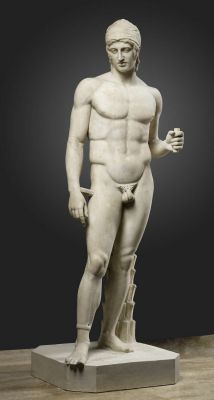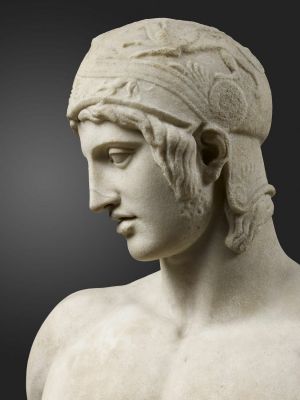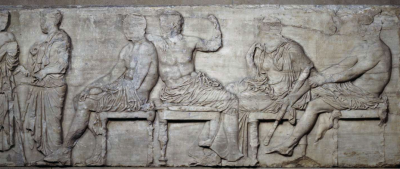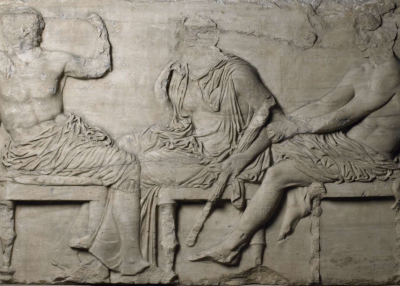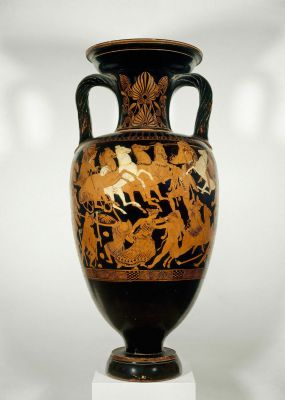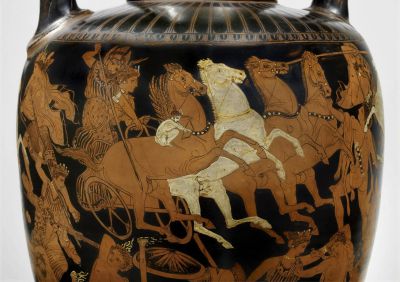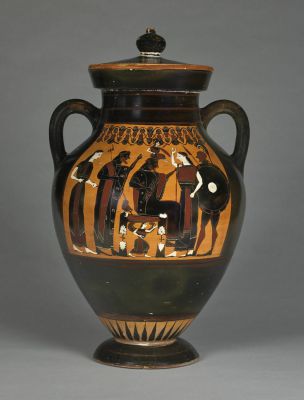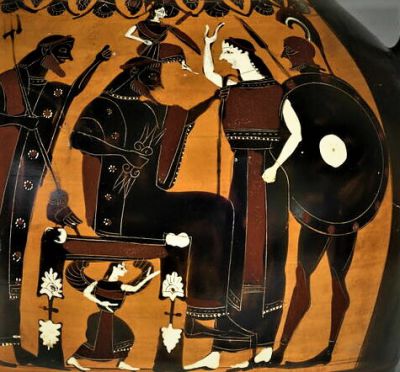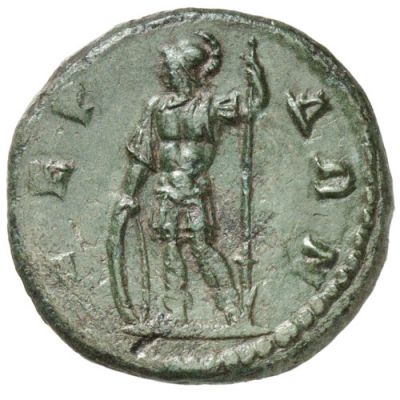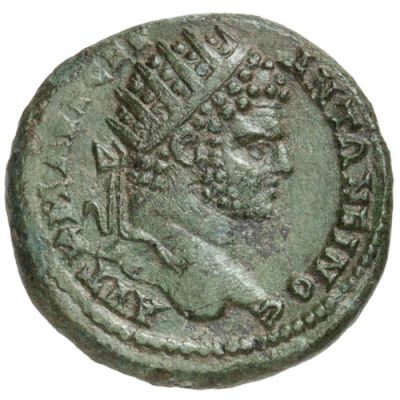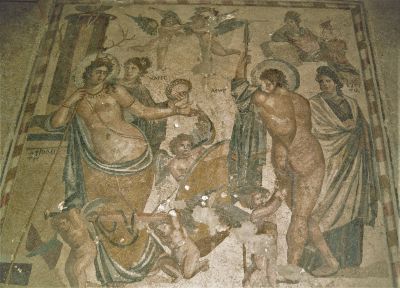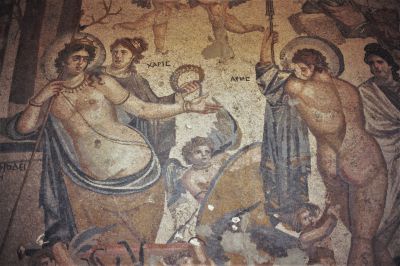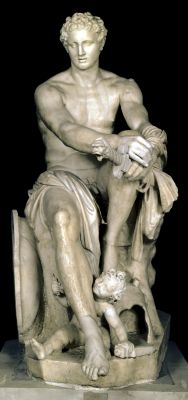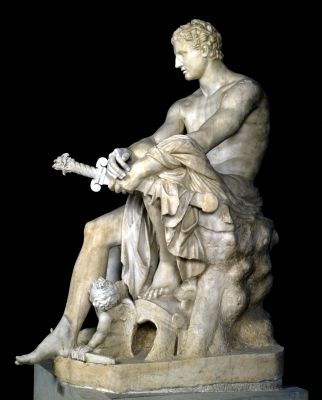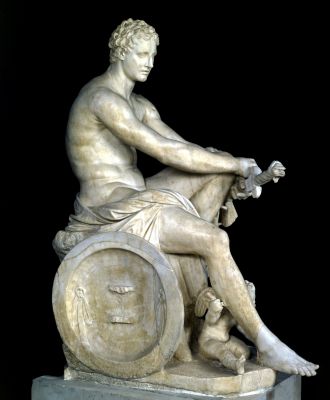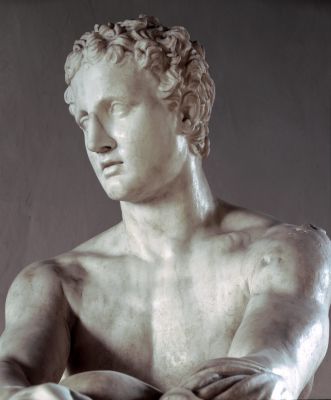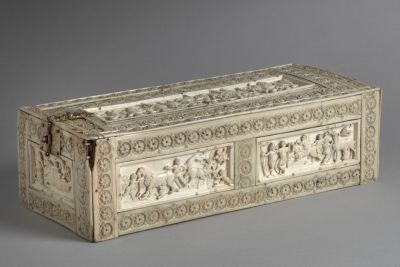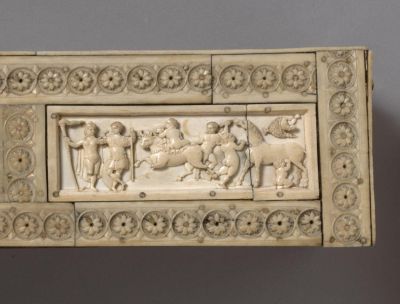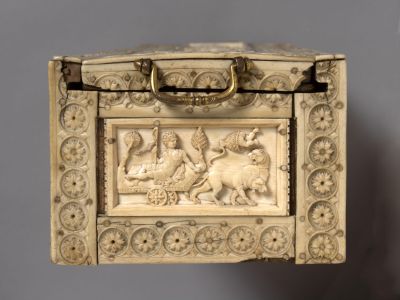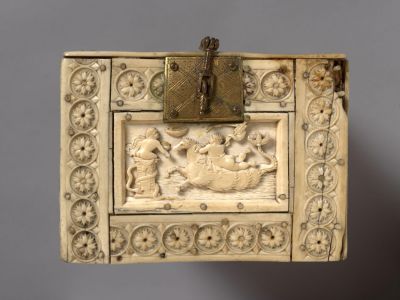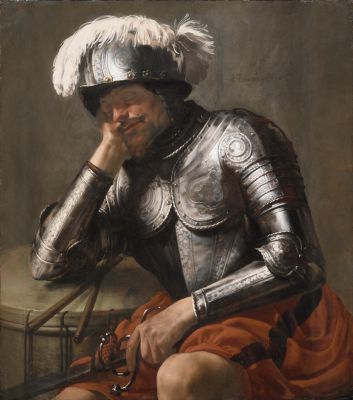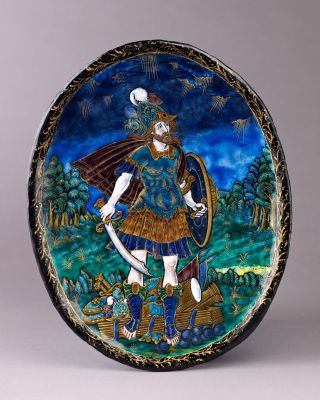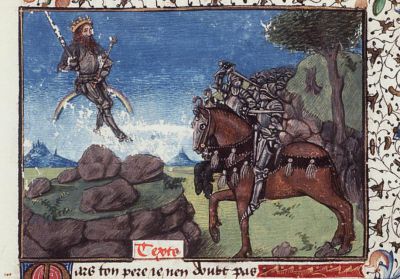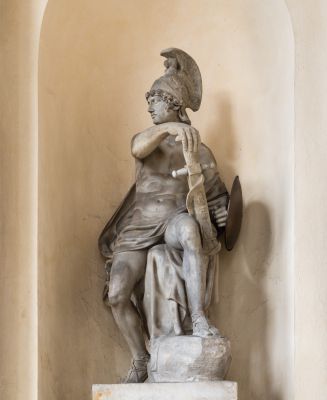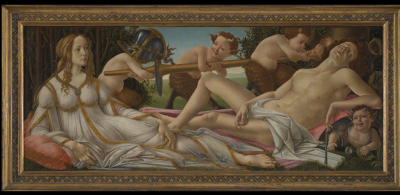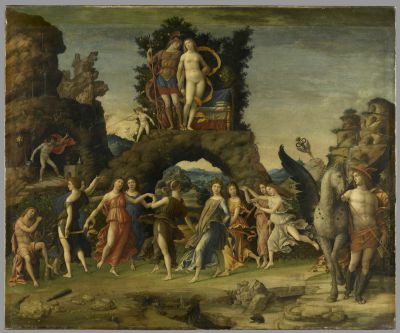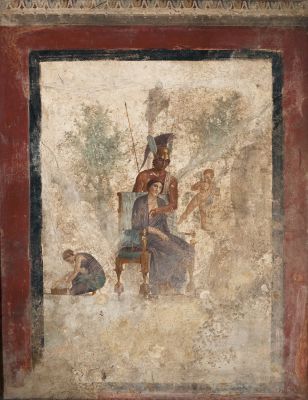
One of the twelve great gods of Olympus, Ares was the son of Zeus and Hera, or in some versions the son of Hera alone, conceived by her “without carnal knowledge” merely by smelling a flower offered by the goddess Anthousa. Elsewhere, Ares is referred to as the son of Zeus and Enyo, to whose name he owes the epithet Enyalius (“Ares Enyalius”); others, however, say that Enyalius was a Thracian hero slain by Ares when, deeming the god inferior to him as a warrior, he refused to welcome him into his house. Ares is traditionally held to have been born in Thrace and raised by a nymph called Thero, which is why the Lacedaemonians called him Ares Theritas. Another tradition says that Ares was raised by Priapus, who taught him the arts of dance and war. Hebe and Eileithyia were Ares’ sisters, Cydoemus and the Keres his battlefield companions. The Thracians, known as a barbarous warlike people, had a special veneration for Ares and for his descendants, Tereus, Lycurgus and Diomedes. From the days of Homer Ares was celebrated for his martial skills, as the inventor of armour and battle array, and for waging war with manic fury, heedless of the laws of gods and men. Nonetheless, Ares was not invincible: in clashes with Athena and with Heracles he was defeated, and he was once abducted and imprisoned by the giants Otus and Ephialtes (the Aloadae). There are also many legends about Ares’ love affairs, not least the secret union with Aphrodite from which sprang Deimos and Phobos (Fear and Terror) and, in other versions, Eros, Anteros (Reciprocal Love) and Harmonia. In ancient Greek art Ares was depicted wearing armour and helmet, armed with javelin and sword. He was of more than human height and uttered terrifying cries. Although he usually fought on foot, he sometimes appeared in a chariot drawn by two horses, Deimos and Phobos. From Thrace the cult of Ares spread to other Greek cities; shrines have been found in Boeotia, at Thebes, in Laconia and elsewhere. His name, finally, is preserved in that of the Areopagus, the Athenian court which dealt with cases of homicide.




